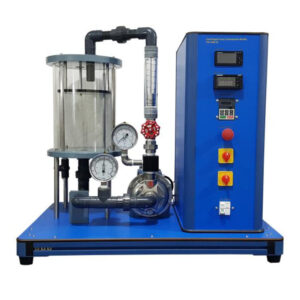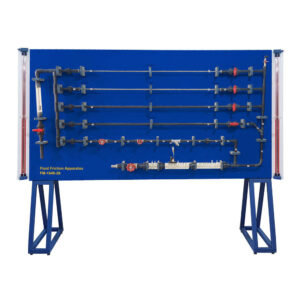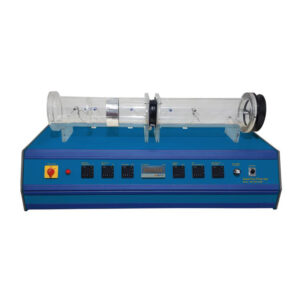Water turbines are turbomachines which convert water energy into mechanical energy. Mostly, they are used for driving generators for power generation purposes. The Kaplan turbine is a reaction turbine with an axial through flow. It has a high specific speed and is suitable for large water flows and small to medium heads. Therefore, the Kaplan turbine is used as a “classic” water turbine in run-of-the-river power stations. The apparatus helps to investigate the characteristic behaviour of a simple-regulated Kaplan turbine during operation. The trainer used water supply from Hydraulic Bench throttle valve for adjusting the flow rate. The angle of incidence and thus the power output of the impeller are changed by adjusting the guide vanes. The turbine is loaded with a band brake.
The speed is captured by means of a non-contact techometer at the turbine shaft. For determining the turbine power the brake band is installed with a dynamometer. The pressures at the inlet of the turbine measured by a manometer.




